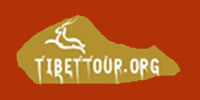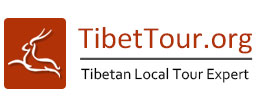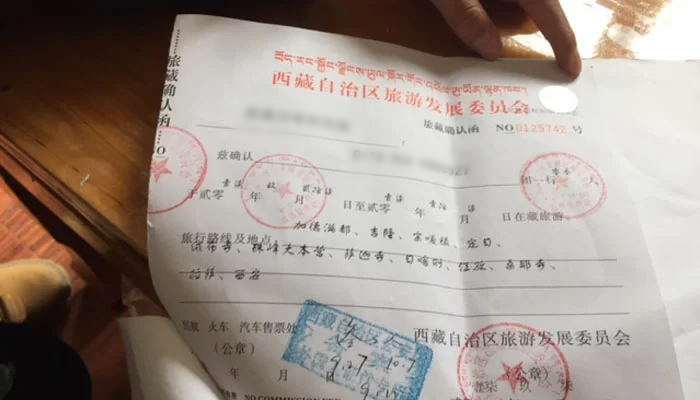Day 1: Arrive in Beijing, please go to our reserved hotel by taxi by yourself.
When international flight lands in Beijing, please take a taxi by yourself to our reserved hotel. The rest of the day is free for you to be on your own.
Stay overnight in Beijing.
Day 2: Beijing - Day tour to explore ancient Beijing, visit Forbidden City, Temple of Heaven and Summer Palace
Today is a guided tour to Forbidden City, Temple of Heaven, Summer Palace which are the traditional must-see places in Beijing. These attractions present to the visitors an image of how the ancient Chinese emperors manage the country, what their family life is, how they spent leisure time, how they sacrifice gods etc.
Stay overnight in Beijing.
Day 3: Beijing - Day tour to Mutianyu Great Wall
The Great Wall tour proves that China was one of the strongest countries in its history. Stretching thousands of kilometers, the Great Wall protected the ancient Chinese against the invasion of the enemy from its north side for more than 1000 years. The Great Wall was listed as one of the world's eight wonders. Mutianyu Great Wall, featured “graceful”, enjoy the best quality among all Wall sections, 80km north-east of Beijing with 22 ancient watchtowers, about one every kilometer. (Cable car is optional if you do not want to walk)
Stay overnight in Beijing.
Day 4: Take Flight from Beijing to Xining
In the morning, you will catch the flights from Beijing to Xining, taking around 3 hours. Upon arrival, you will be transferred to the hotel. The rest of the time is for leisure. You can have a good rest or walk around in the city.
Stay overnight in Xining.
Day 5: Xining - Day tour to Qinghai Lake
Today, you will take the short drive to Qinghai Lake, the largest inland saltwater lake in China. There you will see different varieties of birds. It is suggested to take a cycling trip around the lake the appreciate the beautiful scenery. The lake is elliptical in shape, and the crystal-clear waters reflect the surrounding mountains and the clear blue sky.
In the afternoon, drive back to Xining to see the beautiful view of Riyue Mountain, known locally as “Sun and Moon Mountain”. Legend tells that it was on this mountain that Princess Wencheng lost a mirror called Sun and Moon, that allowed her to see her home in Xi’an, and the Datong River was born from her tears.
Stay overnight in Xining.
Day 6: Xining Tour in Ta’er Monastery and board the overnight train to Lhasa
In the morning, you are about to Ta’er Monastery, also named Kumbum Monastery, lies on 25 km to the northeast of Xining. It is the birthplace of Tsongkhapa, well-known Tibetan Buddhist master.
In the afternoon, you will be transferred to the railway station for the overnight train to Lhasa.
Stay overnight on the train.
Day 7: Breathtaking Views along the Tibet Railway, and Arrive in Lhasa in the Afternoon
Today, you are going to witness the most beautiful scenery of Qinghai-Tibet Railway. Along the way to Nagchu, you could see Tanggula Pass come and go, almost indistinguishable from the rest of the high land. You could find villagers gaze at the passing train and yaks bolted off the tracks. Up here, every few minutes another range of snow-capped peaks with glaciers streaming down their sides appeared on the horizon.
After the whole daytime in the train enjoying the views outside, the train finally arrives in Lhasa at about 12:45.
Upon arrival, be greeted by local guide at the train station and be presented with traditional Tibetan White Scarf to wish you good luck! After group photo at the station, board on the vehicle and transfer back to hotel, you will enjoy the spectacular scenery and the typical Tibetan villages on the way.
Stay at the hotel after arrival for adapting to the high attitude. It is helpful to take things easy for the first few days, and try to drink more water.
Stay overnight in Lhasa.
Day 8: Lhasa day tour to visit Potala Palace, Jokhang Temple, Barkhor Street
The tour will begin from UNESCO World Heritage site - Potala Palace, which is also the winter palace of Dalai Lama. It's situated at 12,139 feet above sea level. It's a 13-story high building that contains over 1,000 rooms, various statues, stupas, murals, and artifacts. Then continue to Jokhang Temple, another UNESCO World Heritage site. It’s a spiritual center for Buddhists in Tibet. Next to the temple there is Barkhor Street, filled with pilgrims and street vendors, selling traditional Tibetan items such as prayer wheels and jewelry.
Stay overnight in Lhasa.
Day 9: Lhasa day tour to visit two important monasteries in Lhasa, Sera & Drepung
In the morning, tourists are going to visit Drepung Monastery which was one of the “three greet” Gelug monasteries of Tibet and was founded in 1416. Ganden palace is used as Dalai Lama’s palace in the Drepung before moving to the Potala palace.
In the afternoon, tourists are going to visit Sera Monastery, which was also one of the “three great” Gelug monasteries of Tibet and was founded in 1419. The highlight is the Monks debate at around 3 - 5 in the afternoon.
Stay overnight in Lhasa.
Day 10: Lhasa (3650m) to Shigatse (3900m) via Gyantse
In the morning, drive from Lhasa to Shigatse. On the way, drive over the Gampala pass (4790 m), and tourists will have a glimpse of Yamdrok-tso (4400m). The Lake is surrounded by many snow-capped mountains and in the distance, clients can have spectacular views of Holy Mount Nyenchen Khangsar (7191m), the highest mountain near Lhasa. Gyantse was historically Tibet's third largest city (after Lhasa and Shigatse).
In Gyantse, tourists will visit the famous Pelkor Monastery and Gyantse Kumbum. After one and a half driving, we arrive in Shigatse, which is the second largest city in Tibet. In Shigatse, tourists will visit Tashilhunpo Monastery, the seat of Tibet's second highest incarnation, the Panchen Lama.
Stay overnight in Shigatse.
Day 11: Shigatse (3900m) to Everest (5200m) via Tingri
Drive to Lhatse, it is a small town where tourists can have lunch. Then, head to Shegar and if the weather is clear enough then on the way down to Shegar tourists will view the Mt. Everest in the distance. After 4 to 6 hours’ drive, tourists will arrive at Rongbuk Monastery but on the way, they will pass one of the highest Passes in Tibet (pang la pass height 5050m) from that’s pass they will view the whole five highest peaks in the world.
Stay overnight at tent or Rongbuk monastery guest house.
Day 12: Everest (5200m) to Kyirong Town (2600m)
Open your eyes, and wake up to the first sunlight shining over the pyramid-shaped summit of imposing Mt. Everest. Grab your camera for an epic shot and stroll to the Rongbuk Monastery, exploring this world’s highest Buddhist compound. If you wish, you can do the meditation and experience the unparalleled tranquility and harmony there. Or you can interact with monks and nuns with the help of guide to learn more of their unique spiritual life.
The temperature can get bitterly cold in the early morning. Do wear enough cloths like your down jacket, scarf and mittens to protect the extreme coldness.
Then drive to Tongla pass to see the panoramic view of Himalaya mountain range. Then driving down to Kyirong, where is surrounded by forest with ice-capped mountain background. The altitude is 2600m at the border.
Stay overnight in Kyirong.
Day 13: Exit China through Kyirong Border (2600m), then drive to Kathmandu
In the morning, drive clients to the Sino-Nepal border - Kyirong, tour guide will assist clients to check out of the border. After going through the immigration, Nepalese driver will pick you up at the border and drive to Kathmandu. The road to Kathmandu is bumpy but the scenery is quite beautiful, you can see the deep gorges, rivers all through the way. the road condition is rough in Nepal so this 160km road takes a whole day.
Stay overnight in Kathmandu.
Day 14: Day tour to Kathmandu City, Swayambhunath and Patan City
Kathmandu’s Durbar Square is one of three durbar (royal palace) squares in the Kathmandu Valley. It is the site of the Hanuman Dhoka Palace Complex, which was the royal Nepalese residence until the 19th century and where important ceremonies taken place. Swayambhunath the golden spire of the 5th-century Swayambhu stupa is adorned with a colourful fluttering of prayer flags; it crowns a hill overlooking the Kathmandu Valley and offers fantastic views over the city of Kathmandu.
The last site you will visit for today is Patan City which is the second largest town in Kathmandu valley. Patan's central Durbar Square is entitled in the World Heritage Site and absolutely packed with temples, the Golden Temple which is the unique Buddhist Monastery was founded in the 12th century, is a large rectangular building has three roofs and a copper gilded facade with the images of Buddha and Avalokitesvara where there are Buddha images and illustrations on the walls.
Stay overnight in Kathmandu.
Day 15: Day tour to Pashupatinath, Bodhnath and Bhaktapur City
Pashupatinath the most important Hindu temple in Nepal, the old buildings on the site were destroyed by Moslem invaders in the 14th century, its stone linga smashed to dust, but it rose again behind their retreating backs. Succeeding monarchs reinstated the temple and the images. Bouddhanath is among the largest stupas in South Asia, and it has become the focal point of Tibetan Buddhism in Nepal. The white mound looms thirty-six meters overhead. The stupa is located on the ancient trade route to Tibet, and Tibetan merchants rested and offered prayers here for many centuries.
Bhaktapur Durbar Square is a conglomeration of pagoda and shikhara style temples grouped around a fifty-five window palace of brick and wood. The square is one of the most charming architectural showpieces of the Valley as it highlights the ancient arts of Nepal.
Stay overnight in Kathmandu.
Day 16: Kathmandu Departure
Drive back to Kathmandu and transfer to airport to take your flight back home.



























































